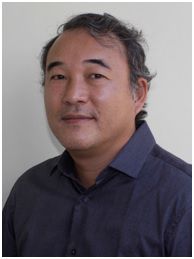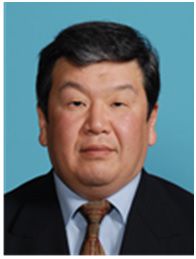
Symposium: Engineering Ceramics, Mechanical Behavior and Fractography
Scope of the Symposium:
In the last 50 years, significant advances were achieved to increase the strength, toughness and reliability of the engineering ceramics, and they have been applied gradually to a practical use in a variety of fields. Demands for ceramics from industries are increasing, therefore we must improve mechanical properties of ceramics and create new materials. For the purpose, new testing method, processing and material design concept are needed. This symposium will be receiving submissions related to advances in the processing, microstructure design, mechanical properties and testing of engineering ceramics.
Abstracts on the following subjects may be submitted:
- Engineering ceramics
- Advances in oxides and non-oxides ceramics
- Composites: particulate, whisker and fiber-reinforced; laminates
- Nanostructured ceramics and composites
- Engineering ceramics processed by new routes: SPS, fast sintering, cold sintering
- Advances in coating for thermal and environmental barrier
- Mechanical behavior
- Processing-microstructure-mechanical properties relationship
- Advances in toughening mechanisms and flaw-tolerant ceramics
- Advances in crack healing of ceramics
- Advances to reduce time-dependent damages (fatigue, slow crack growth, creep, ageing)
- Advances in mechanical testing: new methods, small scale testing
- Advances in flaw detecting methods: NDE (μ-CT)
- Fractography
- Advances in understanding and quantification of fracture
- Advances in surface characterization techniques: imaging methods (confocal, AFM), correlative fractography
- Fractography of nanostructured ceramics and composites
- Case reports: fractography applied to ceramic components
Symposium Organizers:
- Chairman: Humberto N. Yoshimura
- UFABC, Brazil
- E-mail: [email protected]
- Co-chair: Toshiyuki Nishimura
- National Institute for Materials Science, Japan
- E-mail: [email protected]
Invited speakers:
- Frederic Monteverde - CNR-ISTEC, Italy
- Guo-Jun Zhang - Institute of Functional Materials, Donghua University, China
- Junichi Tatami - Yokohama National University, Japan
- Norimasa Nishiyama - Tokyo Institute of Technology, Japan
- Oleg L. Khasanov - Nano-Centre of National Research Tomsk Polytechnic University, Russia
- Pavol Sajgalik - Institute of Inorganic Chemistry, Slovac Academy of Sciences, Slovakia
- Ricardo Hauch Ribeiro Castro - UC Davis, USA
Scientific Committee:
- Antonio Eduardo Martinelli - Federal University of Rio Grande do Norte, Brazil
- Arcan Fehmi Dericioglu – Midle East Technical University, Turkey
- Claudinei dos Santos - State University of Rio de Janeiro, Brazil
- Frederic Monteverde - CNR-ISTEC, Italy
- George D. Quinn - NIST, USA
- Gilbert Fantozzi - INSA de Lyon, France
- Guo-Jun Zhang - Institute of Functional Materials, Donghua University, China
- Hai-Doo Kim - KIMS, South Korea
- Hidehiko Tanaka - Fellow of the Ceramic Society of Japan, Japan
- Hua-Tay Lin - Guangdong University of Technology, China
- José Carlos Bressiani - Nuclear and Energy Research Institute, IPEN-CNEN/SP, Brazil
- Junichi Tatami - Yokohama National University, Japan
- Masahiro Yoshimura - National Cheng Kung University, Taiwan
- Mrityunjay Singh - Ohio Aerospace Institute, USA
- Pavol Sajgalik - Institute of Inorganic Chemistry, Slovac Academy of Sciences, Slovakia
- Richard Todd - University of Oxford, Oxford, United Kingdom
- Toyohiko Yano - Tokyo Institute of Technology, Japan
- Yanchun Zhou - Aerospace Research Institute of Material & Processing Technology, China
- Yoshio Sakka - National Institute for Materials Science, Japan
- You Zhou - AIST, Japan
- Yuping Zeng - Shanghai Institute of Ceramics, Chinese Academy of Sciences, China
Organizers information:
 |
Humberto Naoyuki Yoshimura Humberto N. Yoshimura is professor of Ceramic Science and Engineering in the Center for Engineering, Modeling and Applied Social Sciences, at the Federal University of ABC (UFABC), São Paulo state, Brazil, since 2009. He obtained his degrees in Metallurgical Engineering (1991), Master of Engineering (metal-ceramic composite, 1994), and Doctor of Engineering (advanced ceramic, 2000) from the Polytechnic School of the University of São Paulo (USP). Before the current position, Humberto was senior researcher at the Technological Research Institute of the São Paulo State (IPT, 1996-2009), in which he headed the Laboratory of Ceramic Technology (2001-2006). In UFABC, he was the head of the industrial liaison office - Innovation Agency (2012-2014), and currently he is the head of the Graduate Program in Materials Science and Engineering (since 2016), a course that was created under his coordination. He is also a supervisor at the MS and PhD levels in the Graduate Program in Nanoscience and Advanced Materials at the UFABC (since 2009). He was awarded with the prize State Governor - Brazilian Invention (1999), and Productivity Grant in Technological Development and Innovative Extension (2006-2010) and Productivity Grant in Research (since 2010), both by the Brazilian National Council for Scientific and Technological Development (CNPq). He was a guest researcher at the Advanced Manufacturing Research Institute of the National Institute of Advanced Industrial Science and Technology (AIST, Japan, 2010). Humberto is a member of the Council of the Brazilian Ceramic Society (since 2012), and the Principal Editor of the scientific journal Cerâmica (http://www.scielo.br), since 2016. His lines of research correlate processing, microstructure and physical and mechanical behavior of innovative materials and dental ceramics. He published around 180 research papers and holds two patents. |
 |
Toshiyuki Nishimura Dr. Toshiyuki Nishimura is a group leader of Structural Non-oxide Ceramics group in Energy Infrastructure Materials Field, Research Center for Structural Materials (RCSM), National Institute for Materials Science (NIMS), Tsukuba, Ibaraki, Japan. He graduated from Tokyo Institute of Technology in 1987, obtained Master of Engineering in 1989 and Doctor of Engineering in 1992 from Tokyo Institute of Technology. After he worked in Tokyo Institute of Technology as a Junior Scientist of the Japan Society for the Promotion of Science for one year. He entered the National Institute for Research in Inorganic Materials (NIRIM, former organization of NIMS) in 1993. He stayed in Max-Planck Institute for Metals Research, Germany, as a Guest Scientist in 1996-1997. He served as a specialist in Japanese Ministry of Education, Culture, Sports, Science and Technology in 2000-2001. He is a member of the Ceramic Society of Japan, Japan Society of Powder and Powder Metallurgy and the Technical Association of Refractories, Japan. He was one of organizers of a symposium “Innovation in Refractories and Traditional Ceramics” in ICC3 held in Osaka, Japan. He was a head of editorial committee of the Technical Association of Refractories, Japan. His major research fields include fabrication and mechanical properties of non-oxide ceramics. He published around 160 original papers, 11 reviews and 7 books. |